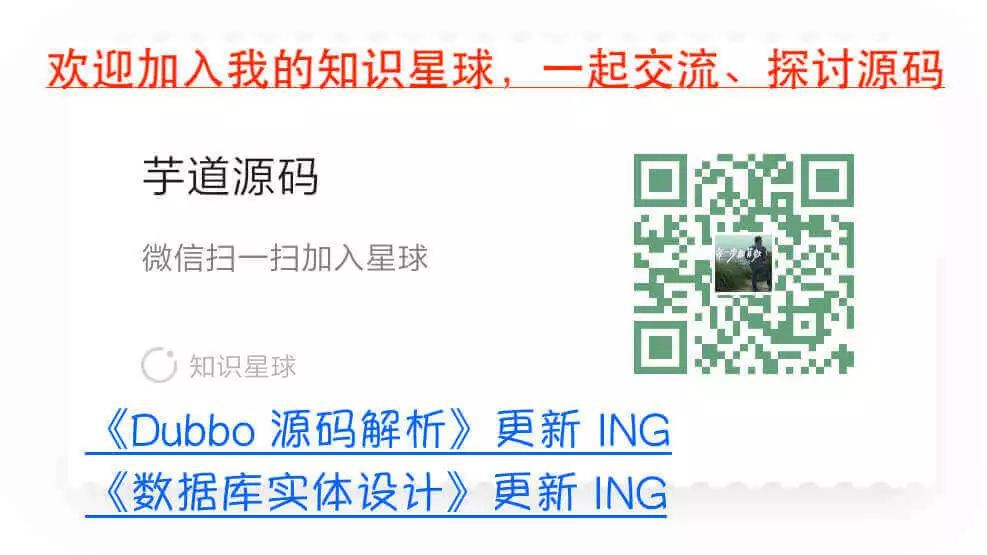點選上方“芋道原始碼”,選擇“置頂公眾號”
技術文章第一時間送達!
原始碼精品專欄
時下很多企業應用更新換代到分散式,一篇文章瞭解什麼是RPC。
原作者梁飛,在此記錄下他非常簡潔的rpc實現思路。
核心框架類
/*
* Copyright 2011 Alibaba.com All right reserved. This software is the
* confidential and proprietary information of Alibaba.com ("Confidential
* Information"). You shall not disclose such Confidential Information and shall
* use it only in accordance with the terms of the license agreement you entered
* into with Alibaba.com.
*/
package com.alibaba.study.rpc.framework;
import java.io.ObjectInputStream;
import java.io.ObjectOutputStream;
import java.lang.reflect.InvocationHandler;
import java.lang.reflect.Method;
import java.lang.reflect.Proxy;
import java.net.ServerSocket;
import java.net.Socket;
/**
* RpcFramework
*
* @author william.liangf
*/
public class RpcFramework {
/**
* 暴露服務
*
* @param service 服務實現
* @param port 服務埠
* @throws Exception
*/
public static void export(final Object service, int port) throws Exception {
if (service == null)
throw new IllegalArgumentException("service instance == null");
if (port <= 0 || port > 65535)
throw new IllegalArgumentException("Invalid port " + port);
System.out.println("Export service " + service.getClass().getName() + " on port " + port);
ServerSocket server = new ServerSocket(port);
for(;;) {
try {
final Socket socket = server.accept();
new Thread(new Runnable() {
@Override
public void run() {
try {
try {
ObjectInputStream input = new ObjectInputStream(socket.getInputStream());
try {
String methodName = input.readUTF();
Class>[] parameterTypes = (Class>[])input.readObject();
Object[] arguments = (Object[])input.readObject();
ObjectOutputStream output = new ObjectOutputStream(socket.getOutputStream());
try {
Method method = service.getClass().getMethod(methodName, parameterTypes);
Object result = method.invoke(service, arguments);
output.writeObject(result);
} catch (Throwable t) {
output.writeObject(t);
} finally {
output.close();
}
} finally {
input.close();
}
} finally {
socket.close();
}
} catch (Exception e) {
e.printStackTrace();
}
}
}).start();
} catch (Exception e) {
e.printStackTrace();
}
}
}
/**
* 取用服務
*
* @param 介面泛型
* @param interfaceClass 介面型別
* @param host 伺服器主機名
* @param port 伺服器埠
* @return 遠端服務
* @throws Exception
*/
@SuppressWarnings("unchecked")
public static T refer(final Class interfaceClass, final String host, final int port) throws Exception {
if (interfaceClass == null)
throw new IllegalArgumentException("Interface class == null");
if (! interfaceClass.isInterface())
throw new IllegalArgumentException("The " + interfaceClass.getName() + " must be interface class!");
if (host == null || host.length() == 0)
throw new IllegalArgumentException("Host == null!");
if (port <= 0 || port > 65535)
throw new IllegalArgumentException("Invalid port " + port);
System.out.println("Get remote service " + interfaceClass.getName() + " from server " + host + ":" + port);
return (T) Proxy.newProxyInstance(interfaceClass.getClassLoader(), new Class>[] {interfaceClass}, new InvocationHandler() {
public Object invoke(Object proxy, Method method, Object[] arguments) throws Throwable {
Socket socket = new Socket(host, port);
try {
ObjectOutputStream output = new ObjectOutputStream(socket.getOutputStream());
try {
output.writeUTF(method.getName());
output.writeObject(method.getParameterTypes());
output.writeObject(arguments);
ObjectInputStream input = new ObjectInputStream(socket.getInputStream());
try {
Object result = input.readObject();
if (result instanceof Throwable) {
throw (Throwable) result;
}
return result;
} finally {
input.close();
}
} finally {
output.close();
}
} finally {
socket.close();
}
}
});
}
}
定義服務介面
/*
* Copyright 2011 Alibaba.com All right reserved. This software is the
* confidential and proprietary information of Alibaba.com ("Confidential
* Information"). You shall not disclose such Confidential Information and shall
* use it only in accordance with the terms of the license agreement you entered
* into with Alibaba.com.
*/
package com.alibaba.study.rpc.test;
/**
* HelloService
*
* @author william.liangf
*/
public interface HelloService {
String hello(String name);
}
實現服務
/*
* Copyright 2011 Alibaba.com All right reserved. This software is the
* confidential and proprietary information of Alibaba.com ("Confidential
* Information"). You shall not disclose such Confidential Information and shall
* use it only in accordance with the terms of the license agreement you entered
* into with Alibaba.com.
*/
package com.alibaba.study.rpc.test;
/**
* HelloServiceImpl
*
* @author william.liangf
*/
public class HelloServiceImpl implements HelloService {
public String hello(String name) {
return "Hello " + name;
}
}
暴露服務
/*
* Copyright 2011 Alibaba.com All right reserved. This software is the
* confidential and proprietary information of Alibaba.com ("Confidential
* Information"). You shall not disclose such Confidential Information and shall
* use it only in accordance with the terms of the license agreement you entered
* into with Alibaba.com.
*/
package com.alibaba.study.rpc.test;
import com.alibaba.study.rpc.framework.RpcFramework;
/**
* RpcProvider
*
* @author william.liangf
*/
public class RpcProvider {
public static void main(String[] args) throws Exception {
HelloService service = new HelloServiceImpl();
RpcFramework.export(service, 1234);
}
}
取用服務
/*
* Copyright 2011 Alibaba.com All right reserved. This software is the
* confidential and proprietary information of Alibaba.com ("Confidential
* Information"). You shall not disclose such Confidential Information and shall
* use it only in accordance with the terms of the license agreement you entered
* into with Alibaba.com.
*/
package com.alibaba.study.rpc.test;
import com.alibaba.study.rpc.framework.RpcFramework;
/**
* RpcConsumer
*
* @author william.liangf
*/
public class RpcConsumer {
public static void main(String[] args) throws Exception {
HelloService service = RpcFramework.refer(HelloService.class, "127.0.0.1", 1234);
for (int i = 0; i < Integer.MAX_VALUE; i ++) {
String hello = service.hello("World" + i);
System.out.println(hello);
Thread.sleep(1000);
}
}
}
總結
這個簡單的例子的實現思路是使用阻塞的socket IO流來進行server和client的通訊,也就是rpc應用中服務提供方和服務消費方。並且是端對端的,用埠號來直接進行通訊。方法的遠端呼叫使用的是jdk的動態代理,引數的序列化也是使用的最簡單的objectStream。
真實的rpc框架會對上面的實現方式進行替換,採用更快更穩定,更高可用易擴充套件,更適宜分散式場景的中介軟體,技術來替換。例如使用netty的nio特性達到非阻塞的通訊,使用zookeeper統一管理服務註冊與發現,解決了端對端不靈活的劣勢。代理方式有cglib位元組碼技術。序列化方式有hession2,fastjson等等。不過梁飛大大的部落格使用原生的jdk api就展現給各位讀者一個生動形象的rpc demo,實在是強。rpc框架解決的不僅僅是技術層面的實現,還考慮到了rpc呼叫中的諸多問題,重試機制,超時配置…這些就需要去瞭解成熟的rpc框架是如果考慮這些問題的了。
推薦一個輕量級的rpc框架:motan。weibo團隊在github開源的一個rpc框架,有相應的檔案,用起來感覺比dubbo要輕量級,易上手。

 知識星球
知識星球